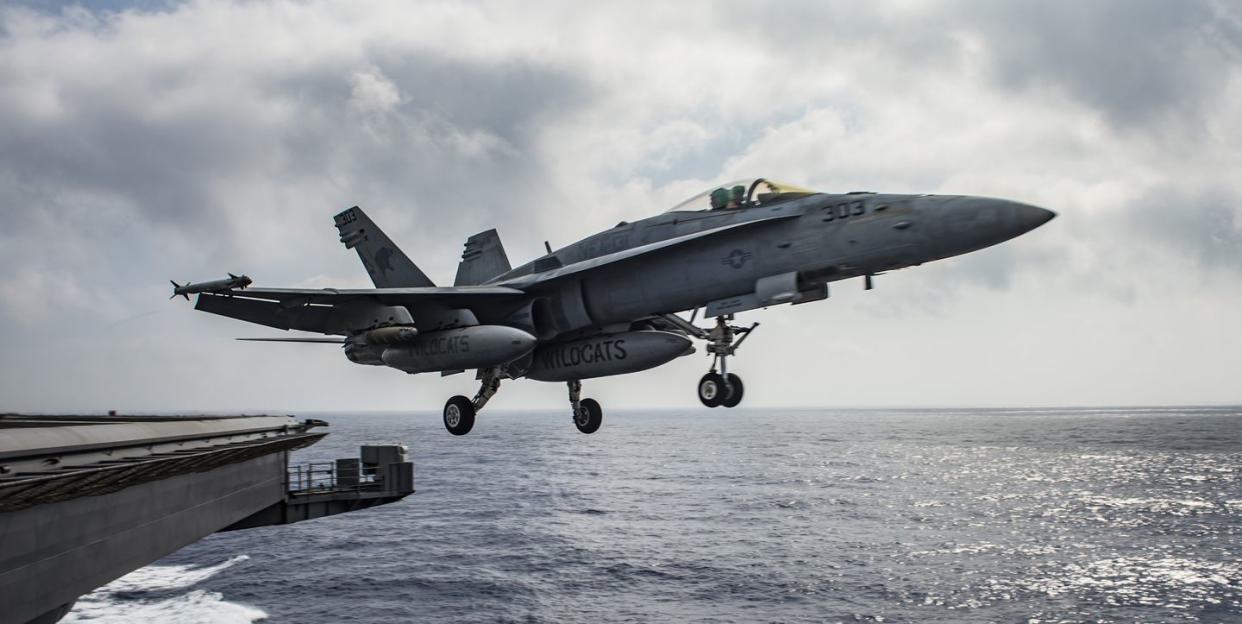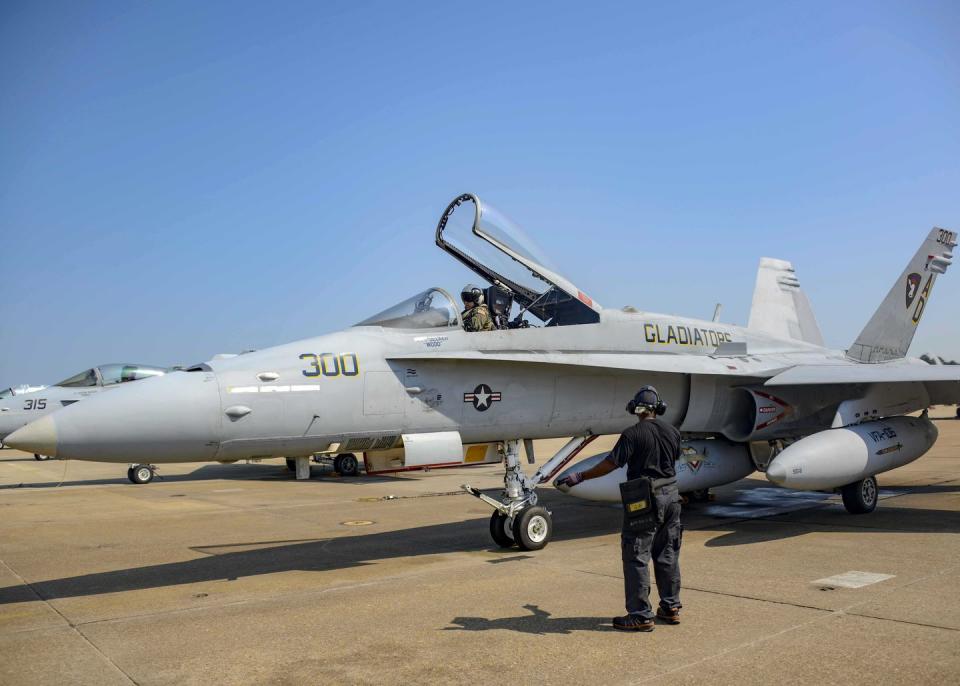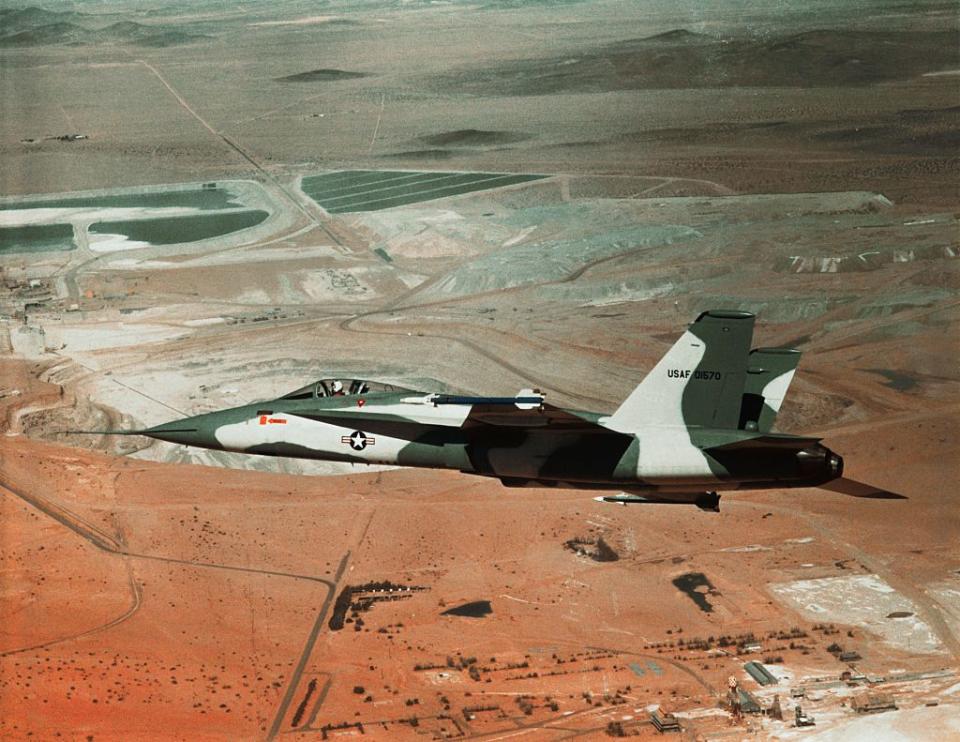The U.S. Navy Flies Its Last F/A-18 Hornet

The U.S. Navy's last F/A-18 Hornet flew for the very last time from NAS Oceana on October 2, 2019.
Originally designed for the U.S. Air Force, the F/A-18 served for 36 years.
The fighter was replaced by both the F/A-18E/F Super Hornet and the F-35C.
The U.S. Navy marked the end of an era last week when the last active duty F/A-18C Hornet flew for the last time. The strike fighter, the first to be anointed with both Fighter and Attack designations, flew for nearly four decades before being replaced by its bigger brother, the Super Hornet. The original Hornet still serves with the U.S. Navy’s elite flight demonstration team, the Blue Angels.
The flight took place at Naval Air Station Oceana, Virginia Beach, Virginia on October 2, 2019. The aircraft was Hornet number 300, assigned to Strike Fighter Squadron 106 (“Gladiators”). According to the U.S. Navy, 300 completed its first acceptance check flight on October 14, 1988. The pilot for the last flight, Lt. Andrew Jalali, was also born in 1988.

The F/A-18 Hornet was developed in the late 1970s as the YF-17 Cobra, a competitor for the U.S. Air Force’s Lightweight Fighter program. After losing the competition to the F-16 Fighting Falcon, aerospace giants Northrop and McDonnell Douglas teamed up to create a carrier-based version. The result was the F/A-18 Hornet. The Hornet, designed to perform both air-to-air and air-to-ground missions equally, was the first fighter to include both the “F” for fighter and “A” for attack designations in its title.
The Hornet joined the fleet in 1983, replacing F-4 Phantom and A-7 Corsair fighters in Navy and Marine Corps service. The initial -A model gave way to the improved -C model, and in the 1990s the Navy introduced a larger, heavier version, the F/A-18E/F Super Hornet. The Hornet’s first combat mission was Operation El Dorado Canyon, the 1986 air raid on Libya. The multi-role fighter has participated in every conflict since, from 1991’s Operation Desert Storm to the air campaign against the Islamic State.

The retirement of the F-14 Tomcat in 2006 left the Hornet/Super Hornet the only U.S. Navy fighter jets operating from aircraft carriers. The Hornet remained in Navy service longer than originally planned, thanks to the technical problems with the new F-35C Joint Strike Fighter. Today, the fighter complement in a typical carrier air wing consists of four Super Hornet squadrons, a mix that will eventually transition to two squadrons of Super Hornets and two squadrons of F-35Cs.
The Navy held a retirement ceremony for the Hornet in February 2019 but a handful of the planes remained flying. The Navy’s Blue Angels still fly about a half dozen F/A-18s but will trade them in for early model F/A-18E/F Super Hornets in 2021. The Hornet also flies with the U.S. Navy Reserves as an aggressor aircraft and is scheduled to fly with the U.S. Marine Corps until 2030.
Source: Flightglobal
You Might Also Like

